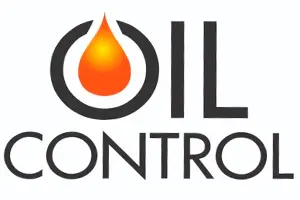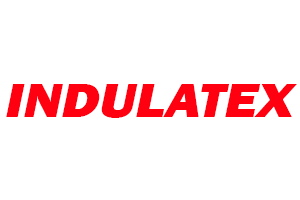Unlike single-ended DMA, which only allows data to flow in one direction, dual-ended DMA enables simultaneous data transfer in both directions. This process speeds up data transfer and frees up the CPU to perform other tasks, improving overall system performance. This allows for efficient data movement between peripherals and memory, reducing CPU overhead significantly. Programmed I/O DMA is a method where the CPU directly controls data transfers between peripheral devices and memory.
What Is Direct Memory Access (DMA)? Meaning, Types, Principles, Working, and Benefits
In dual-ended DMA, the DMA controller can initiate read and write operations independently without involving the CPU for each transfer. This enhances efficiency by reducing CPU involvement in managing data movement tasks. DMA Controller is a type of control unit that works as an interface for the data bus and the I/O Devices. As mentioned, DMA Controller has the work of transferring the data without the intervention of the processors, processors can control the data transfer. DMA Controller also contains an address unit, which generates the address and selects an I/O device for the transfer of data.
In Interleaved DMA, data is divided into smaller blocks or packets, which are transferred alternatingly between different devices. This ensures efficient memory bus utilization and reduces bottlenecks that could occur with sequential transfers. By allowing devices to send and receive data concurrently, dual-ended DMA improves overall system performance by minimizing idle time during data exchanges. This results in faster response times for input/output operations and better utilization of system resources.
Modes of Data Transfer in DMA
This enables advertisers to optimize their budgets and enhance their return on investment. By intelligently managing contention for memory access, the DMA controller optimizes the system’s overall performance by minimizing idle time and maximizing throughput. It coordinates communication between different components seamlessly, allowing for smoother operation and improved efficiency in handling large volumes of data. By interleaving data transfers, this method optimizes overall system performance by minimizing idle times and maximizing throughput. It is particularly beneficial when real-time processing and high-speed data transfer are crucial.
DMA controller needs the same old circuits of an interface to communicate with the CPU and Input/Output devices. Unlike traditional DMA methods, where only one device can access the memory at a time, interleaved DMA enables parallel data transfers from multiple sources. Single-ended DMA is a type of direct memory access where data transfer occurs in one direction only, from the peripheral device to memory or vice versa. In this mode, the data moves along a single path without needing bidirectional communication. Once the DMA controller has control of the bus, it initiates the actual data movement between devices and memory. The DMA controller coordinates with the source and destination devices to efficiently transfer data without involving the CPU.
- In modern computer systems, transferring data between input/output devices and memory can be a slow process if the CPU is required to manage every step.
- By doing so, DMA slashes latency, boosts throughput, and empowers multitasking prowess in servers, network gear, and storage systems.
- In this setup, a central arbiter decides which device gets priority in transferring data.
- As we have explained, DMA is a technology that enhances data transfer efficiency in computer systems.
- Without DMA, your CPU would be stuck in traffic gridlock, slowing operations and hindering overall system responsiveness.
- By utilizing DMA, devices like network cards, graphics cards, device drivers, and storage controllers can directly access memory locations without constant intervention from the processor.
DMA Principles
Since local consumers often have varying needs and expectations compared to a broader audience, customizing ads to fit the local landscape becomes not just beneficial, but essential. Local promotions, community events, and localized terminology can be emphasized when targeting a predefined DMA, ultimately driving foot traffic and fostering Top Forex Brokers a sense of community. By adhering to these principles, DMA facilitates efficient and reliable data transfer between devices and memory, contributing to overall system performance and responsiveness.
Process Management
Digital platforms now employ DMA-like metrics to optimize ad campaigns across various channels. This digital shift signifies a substantial change in how marketers approach audience segmentation, allowing for hyper-targeted campaigns that can be adjusted in real-time based on ongoing analytics. In summary, the meaning of DMA transcends simple definitions and touches upon the core strategies that drive effective marketing. Whether in traditional advertising or modern digital platforms, understanding your DMA equips you with the insights needed to connect with your target market meaningfully. Mastering the concept of DMA not only aligns marketing goals but also enriches the overall consumer experience.
Impact on Local Businesses
- In this mode, the DMA controller acts as a bus master and communicates directly with memory or other devices without involving the CPU.
- While understanding your DMA offers numerous advantages, navigating the complexities involved can pose challenges.
- Learn from this article how DMA works, the principles, the types of DMA, and some of its benefits and limitations.
- The variability of viewer habits, changes in demographics, and technological advancements can all shift the landscape.
- In this type of DMA, the CPU initiates each data transfer by issuing commands to move data to or from memory.
During data transfer, information flows directly from one device to another through DMA channels without CPU intervention. Once the DMA controller gains control of the system bus, it can directly access the memory without involving the CPU. This direct interaction allows efficient and speedy data transfers between peripherals and memory locations. In this process, a DMA-capable device takes control of the system bus to manage data transfers independently from the CPU. The DMA controller coordinates with other devices on the bus for efficient data movement, ensuring smooth communication flow within the system. During initiation, the DMA controller identifies and prioritizes incoming requests based on predefined criteria.
Direct Memory Access
The variability of viewer habits, changes in demographics, and technological advancements can all shift the landscape. As audiences increasingly consume content through non-traditional platforms, like streaming services and social media, keeping your DMA updated is paramount. Businesses that rely on outdated demographic information risk wasting resources on ineffective campaigns. Regularly re-evaluating your DMA based on current statistics and changing consumer behavior ensures you remain relevant in a fast-paced market. For local businesses, mastering the DMA concept can significantly magnify marketing efforts. Imagine trying to reach an audience that is not familiar with your product or service; knowing the right DMA can change that game entirely.
Step 4: Bus mastering
This ensures efficient utilization of system resources and minimizes delays in data transfer. Once a request is accepted, the DMA controller temporarily takes control of the bus to facilitate direct communication between devices and memory. Dual-ended DMA is a direct memory access type where data transfers can occur bidirectionally between the I/O device and memory.
Once the data transfer is complete, the DMA controller releases control of the system bus. This step is crucial as it allows other devices to access the bus for their own operations without any interference from the DMA process. When multiple devices need to access the memory simultaneously, the DMA controller arbitrates between these requests to ensure efficient utilization of the system’s resources.
Direct Memory Access (DMA) is vital for IT infrastructure as it turbocharges data transfer efficiency by freeing up the CPU from handling every byte exchange. Think of it as a traffic controller rerouting data directly between devices and memory lanes, bypassing CPU traffic jams. This method may be less efficient than other DMA forms since it relies heavily on CPU intervention, leading to increased overhead and slower processing speeds. However, in certain scenarios where precise control over data transfers is necessary, Programmed I/O can provide advantages in terms of flexibility and customization for specific tasks. It allows multiple devices to share the bus without causing conflicts or delays in data transfer. By utilizing DMA, devices like network cards, graphics cards, device drivers, and storage controllers can directly access memory locations without constant intervention from the processor.
The division of geographic areas is crafted carefully to ensure advertisers can make informed decisions. Understanding how DMA maps are created allows businesses to navigate potential pitfalls and leverage the best strategies for their particular market reach. By doing so, DMA slashes latency, boosts throughput, and empowers multitasking prowess in servers, network gear, and storage systems. Without DMA, your CPU would be stuck in traffic gridlock, slowing operations and hindering overall system responsiveness. In essence, DMA is the secret sauce that keeps the IT infrastructure humming along smoothly and efficiently. Once the data transfer is completed, the DMA controller triggers an interrupt to notify the CPU.

















































